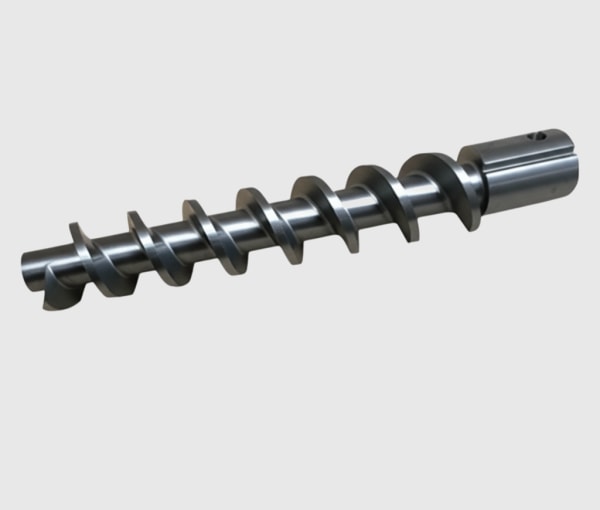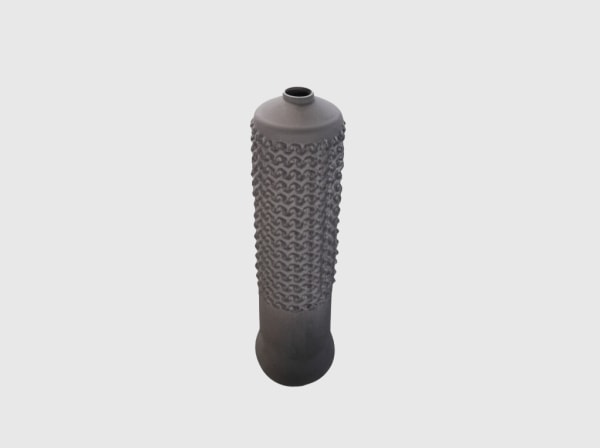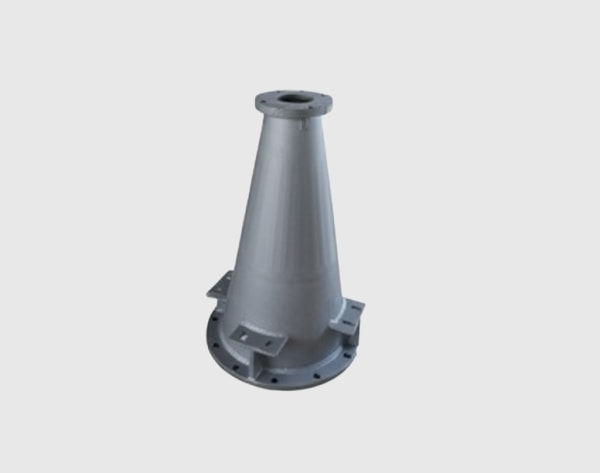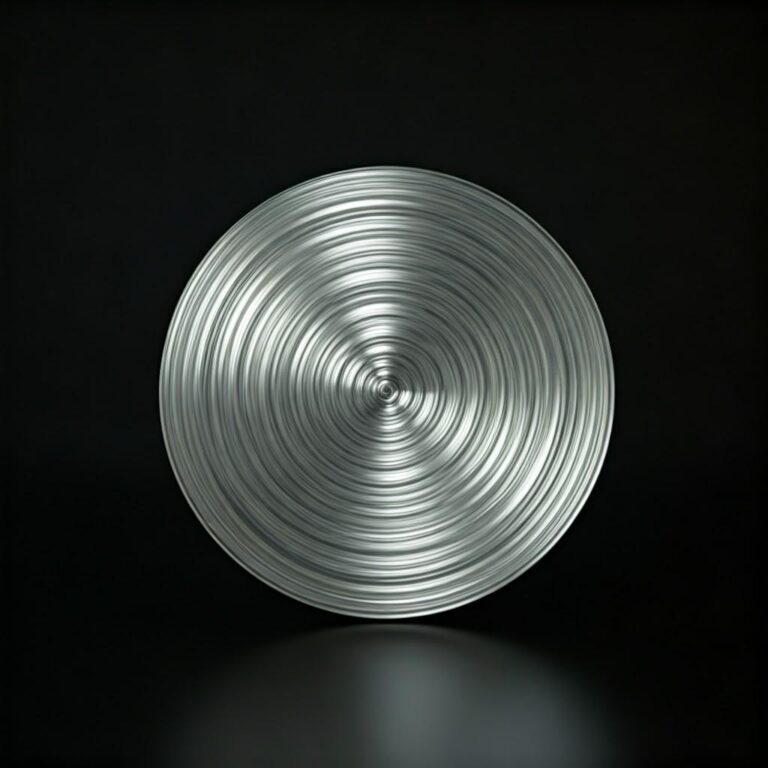Nuclear Sector: SiC for Improved Safety & Efficiency
Introduction – What is Silicon Carbide and its Significance in the Nuclear Sector?
Silicon Carbide (SiC), an advanced ceramic material composed of silicon and carbon, is rapidly gaining prominence in high-performance industrial applications, none more critical than the nuclear energy sector. Its exceptional combination of properties, including superior strength at high temperatures, excellent thermal conductivity, low thermal expansion, high radiation resistance, and chemical inertness, makes it a candidate material for components designed to operate under the extreme conditions found within nuclear reactors and associated facilities. In an industry where safety, reliability, and operational efficiency are paramount, custom silicon carbide products offer solutions that can significantly enhance performance and longevity of critical systems.
The demand for cleaner and more sustainable energy sources continues to drive innovation in nuclear technology. As reactor designs evolve towards higher temperatures and longer operational cycles for increased efficiency and reduced waste, the limitations of traditional metallic materials become more apparent. Materials like zirconium alloys, while widely used, can experience significant degradation under extreme accident conditions. Silicon Carbide, particularly in its composite forms (SiC/SiC composites), presents a robust alternative, promising enhanced accident tolerance and operational margins. Its ability to withstand harsh environments without significant degradation is key to developing next-generation nuclear reactors and improving the safety of current ones. This makes advanced SiC ceramics a focal point for research and development efforts globally.
Key Applications of SiC in Nuclear Power Generation and Waste Management
The unique attributes of Silicon Carbide lend themselves to a variety of critical applications within the nuclear fuel cycle, from power generation to waste management. Engineers and procurement managers in nuclear plant operations and nuclear component manufacturing are increasingly specifying SiC for its performance benefits.
- Fuel Cladding: SiC and SiC/SiC composites are being extensively investigated and developed as a replacement for traditional Zircaloy cladding in Light Water Reactors (LWRs). SiC fuel cladding offers superior high-temperature steam oxidation resistance, reducing hydrogen generation during accident scenarios, a major safety concern. Its high strength also helps maintain fuel integrity under various operational and transient conditions.
- Reactor Core Structures: Components such as control rod guide tubes, channel boxes, and support structures made from nuclear-grade SiC can operate at higher temperatures and under higher neutron fluences with greater stability compared to metallic alloys. This can lead to improved thermal efficiency and longer core lifetimes.
- Heat Exchangers and Recuperators: In advanced reactor designs, particularly high-temperature gas-cooled reactors (HTGRs), SiC’s excellent thermal conductivity and high-temperature strength make it ideal for SiC heat exchanger tubes and other heat transfer components. These can operate more efficiently and reliably in corrosive environments.
- Plasma Facing Components in Fusion Reactors: While still in development, fusion energy represents a long-term goal. SiC is a candidate material for plasma-facing components due to its low neutron activation, high thermal shock resistance, and resistance to sputtering.
- Nuclear Waste Immobilization and Storage: The chemical durability and radiation resistance of SiC make it a promising material for encapsulating and storing high-level nuclear waste. SiC ceramic matrix composites can provide a robust barrier against radionuclide release for extended geological timescales.
- Sensors and Instrumentation: SiC-based sensors can operate reliably in high-temperature, high-radiation environments within reactor cores, providing crucial data for monitoring and control where conventional sensors would fail.
The adoption of SiC components in nuclear systems aims to push the boundaries of safety, efficiency, and economic viability for nuclear power.
Why Custom Silicon Carbide is Crucial for Nuclear Safety and Performance
The nuclear industry operates under the most stringent safety and performance standards. Off-the-shelf ceramic components often fall short of meeting the precise and demanding requirements of nuclear applications. This is where custom silicon carbide solutions become indispensable. Customization allows for the optimization of material properties, component geometry, and integration with existing systems, all tailored to specific operational conditions within a nuclear environment.
Key benefits of custom SiC for nuclear applications include:
- Tailored Material Properties: Different applications within a nuclear reactor may require variations in density, purity, grain size, or the type of SiC (e.g., sintered, reaction-bonded, or CVD-SiC). Custom manufacturing of SiC parts allows for the selection and processing of specific SiC grades to achieve desired thermal, mechanical, and radiation resistance properties.
- Complex Geometries: Nuclear components often have intricate designs to maximize efficiency or fit within confined spaces. Custom fabrication enables the production of complex shapes that would be impossible or prohibitively expensive with traditional materials or standard ceramic forming techniques.
- Enhanced Safety Margins: By engineering SiC components specifically for the anticipated stresses, temperatures, and radiation fields, safety margins can be significantly enhanced. For instance, accident-tolerant fuel cladding made from custom SiC composites is designed to withstand conditions far beyond those tolerated by conventional materials.
- Improved Performance and Efficiency: Components like custom-designed SiC flow channel inserts or heat exchanger elements can optimize thermal hydraulics and energy transfer, leading to higher reactor efficiency and output.
- Component Longevity and Reliability: Custom SiC parts, designed with a deep understanding of the nuclear environment, exhibit greater resistance to wear, corrosion, and radiation-induced degradation, leading to longer service life and reduced maintenance downtime.
- Interface Compatibility: Customization ensures that SiC components can be seamlessly integrated with other materials and systems within the reactor, addressing challenges related to differential thermal expansion or joining.
For procurement managers and technical buyers in nuclear engineering firms and reactor component suppliers, partnering with a specialist in custom SiC fabrication is critical to realizing these benefits and ensuring the highest levels of safety and performance.
Recommended SiC Grades for Demanding Nuclear Environments (e.g., SSiC, RBSC)
Selecting the appropriate grade of Silicon Carbide is crucial for ensuring optimal performance and longevity in the demanding environments of nuclear reactors. Different manufacturing processes yield SiC materials with varying microstructures and properties. For nuclear applications, high-purity SiC and materials with superior radiation stability are generally preferred.
Here are some commonly considered SiC grades for nuclear applications:
| SiC Grade | Key Characteristics | Typical Nuclear Applications | Considerations |
|---|---|---|---|
| Sintered Silicon Carbide (SSiC) | High density (typically >98%), fine grain size, excellent strength, high thermal conductivity, good corrosion resistance, good radiation stability. Formed by sintering SiC powder at high temperatures, often with non-oxide sintering aids. | Fuel cladding, structural components, heat exchanger tubes, pump seals, bearings. | Can be more challenging to machine complex shapes. Properties can be tailored by controlling sintering aids and process. |
| Reaction-Bonded Silicon Carbide (RBSC / SiSiC) | Contains free silicon (typically 8-15%), good thermal shock resistance, relatively easy to form complex shapes, good wear resistance. Formed by infiltrating a porous carbon preform with molten silicon. | Structural supports, wear components, some heat transfer applications. May be less suitable where free silicon is a concern for neutron economy or high-temperature chemical compatibility. | Presence of free silicon can limit its use at very high temperatures (>1350°C) or in specific chemical environments. Lower radiation resistance compared to pure SSiC or CVD-SiC under certain conditions. |
| Chemical Vapor Deposited Silicon Carbide (CVD-SiC) | Extremely high purity (>99.999%), theoretically dense, exceptional corrosion and oxidation resistance, excellent radiation stability. Formed by chemical vapor deposition on a substrate. | Coatings on fuel particles (TRISO fuel), protective layers on other components, high-purity sensor components, optics for plasma diagnostics. | Typically more expensive and limited to thinner sections or coatings, though bulk components can be made. |
| Nitride-Bonded Silicon Carbide (NBSC) | Good thermal shock resistance, high strength, good wear resistance. SiC grains bonded by a silicon nitride phase. | Refractory linings, wear parts. Less commonly considered for in-core applications compared to SSiC or CVD-SiC due to the nitride phase. | Presence of nitrogen might be a concern for some nuclear applications regarding activation. |
| SiC Fiber-Reinforced SiC Matrix Composites (SiC/SiC CMC) | Excellent fracture toughness (non-brittle failure), superior high-temperature strength retention, exceptional radiation resistance, and thermal shock resistance. | Accident-tolerant fuel cladding, channel boxes, control rods, hot gas ducting, various core structural components. | Manufacturing is complex and costly, but offers unparalleled performance for the most demanding applications. Still under active development and qualification for widespread use. |
The choice of nuclear-grade SiC depends heavily on the specific application’s requirements, including operating temperature, neutron flux, chemical environment, and mechanical stresses. Collaboration with experienced SiC material scientists and manufacturers is essential to make the optimal selection.
Critical Design Considerations for SiC Components in Nuclear Systems
Designing components with Silicon Carbide for nuclear systems requires a different approach than with traditional metals, primarily due to its ceramic nature. Engineers must consider its unique mechanical and thermal properties to ensure reliability and safety. Key design considerations for SiC nuclear components include:
- Brittleness and Fracture Toughness: SiC is a brittle material, meaning it has low fracture toughness compared to metals. Designs must avoid sharp corners, stress concentrators, and tensile stresses where possible. Probabilistic design approaches (e.g., Weibull statistics) are often used to predict failure probability. For applications requiring higher toughness, SiC/SiC composites are preferred.
- Thermal Stress Management: SiC has high thermal conductivity and a relatively low coefficient of thermal expansion. However, significant temperature gradients can still induce high thermal stresses. Careful thermal analysis and design to minimize these gradients are crucial, especially during reactor startup, shutdown, and transient events.
- Manufacturing Constraints: The manufacturability of the desired SiC grade and geometry must be considered early in the design phase. Complex shapes might be easier to achieve with RBSC than SSiC, but SSiC might offer superior properties. Near-net-shape forming techniques are preferred to minimize costly and difficult machining.
- Joining and Assembly: Joining SiC to itself or to other materials (like metals) is a significant challenge due to differences in properties and the inability to weld SiC in the traditional sense. Specialized joining techniques such as brazing, diffusion bonding, or mechanical fastening must be carefully designed and qualified.
- Radiation Effects: While SiC is generally radiation-resistant, high neutron fluences can cause dimensional changes (swelling or shrinkage), changes in thermal conductivity, and some degradation of mechanical properties. These effects must be accounted for in the design, especially for components with long intended service lives in high-flux regions. Radiation-hardened SiC grades and designs are essential.
- Chemical Compatibility: SiC exhibits excellent resistance to most chemicals. However, at very high temperatures, reactions with steam (though much slower than for Zircaloy) or impurities in coolants need to be considered. The purity of the SiC grade can influence its chemical stability.
- Non-Destructive Examination (NDE): Developing and applying reliable NDE techniques to inspect SiC components for flaws before and during service is critical. Methods like X-ray computed tomography, ultrasonic testing, and acoustic emission are adapted for ceramics.
- Dimensional Tolerances and Surface Finish: While precise dimensions can be achieved through grinding and lapping, these are costly processes. Designs should specify tolerances and surface finishes that are genuinely required for functionality to manage costs.
Engaging with a knowledgeable custom SiC component supplier early in the design process can help navigate these considerations effectively, leading to robust and reliable nuclear components.
Achievable Tolerances, Surface Finish, and Dimensional Control for Nuclear-Grade SiC
The precision requirements for components in the nuclear industry are exceptionally high, driven by safety imperatives and the need for predictable performance. For nuclear-grade Silicon Carbide parts, achieving tight dimensional tolerances and specific surface finishes is critical for functionality, assembly, and longevity. While SiC is a hard and brittle material, advanced manufacturing and finishing techniques allow for remarkable precision.
Dimensional Tolerances:
The achievable tolerances for SiC components depend on several factors, including the SiC grade, component size and complexity, and the manufacturing processes employed (e.g., pressing, sintering, reaction bonding, diamond grinding).
- As-Sintered or As-Bonded Tolerances: For components used in their as-fired state (without extensive machining), tolerances are typically wider, often in the range of ±0.5% to ±1% of the dimension. This can be acceptable for some larger structural elements where high precision isn’t paramount.
- Ground Tolerances: For applications requiring high precision, such as fuel cladding, bearing surfaces, or mating parts, diamond grinding is employed. Through precision grinding, tolerances can be significantly tightened:
- Typical dimensional tolerances: ±0.01 mm to ±0.05 mm (±0.0004″ to ±0.002″) are commonly achievable.
- Tighter tolerances: For critical applications, tolerances as tight as ±0.001 mm to ±0.005 mm (±0.00004″ to ±0.0002″) can be achieved on smaller, less complex features with specialized equipment and processes, albeit at a higher cost.
Surface Finish:
Surface finish is crucial for wear resistance, friction characteristics, sealing surfaces, and fluid dynamics.
- As-Fired Surface: The surface roughness (Ra) of as-sintered or as-bonded SiC typically ranges from 1 µm to 5 µm, depending on the forming method and grain size.
- Ground Surfaces: Standard grinding operations can achieve surface finishes of Ra 0.4 µm to 0.8 µm.
- Lapped and Polished Surfaces: For applications requiring exceptionally smooth surfaces (e.g., seals, bearings, optical components for diagnostics), lapping and polishing techniques are used. These processes can achieve:
- Lapped surfaces: Ra 0.1 µm to 0.4 µm.
- Polished surfaces: Ra < 0.05 µm, with mirror finishes possible (Ra < 0.02 µm).
Dimensional Control:
Maintaining dimensional control throughout the manufacturing process of precision SiC components involves:
- Material Consistency: Starting with high-quality, consistent SiC powders and raw materials.
- Process Control: Tight control over forming, sintering/bonding, and machining parameters.
- Advanced Metrology: Utilizing sophisticated measurement equipment, including CMMs (Coordinate Measuring Machines), optical profilometers, and laser scanners, to verify dimensions and surface characteristics.
Procurement managers seeking tight-tolerance SiC parts should work closely with suppliers who demonstrate robust quality control systems and advanced machining capabilities. Sicarb Tech, leveraging its deep expertise and connection with the Chinese Academy of Sciences, ensures stringent dimensional control for highly specialized nuclear components.
Essential Post-Processing Treatments for Enhanced SiC Performance in Reactors
While the inherent properties of Silicon Carbide are impressive, various post-processing treatments can further enhance its performance, durability, and suitability for specific, demanding nuclear reactor applications. These treatments aim to refine surface characteristics, improve mechanical integrity, or add functional layers. For buyers of high-performance SiC components, understanding these options is crucial.
- Precision Grinding and Lapping: As discussed previously, these are fundamental post-processing steps for achieving tight dimensional tolerances and desired surface finishes. For nuclear applications, this precision is vital for proper fit, sealing, and minimizing stress concentrations. Diamond grinding of SiC is standard for hard machining.
- Polishing: Beyond standard lapping, polishing can create ultra-smooth surfaces (Ra < 0.05 µm). This is critical for applications like SiC mirrors in diagnostic systems or for components where minimizing friction or material adhesion is essential.
- Edge Chamfering/Radiusing: Due to SiC’s brittle nature, sharp edges can be initiation points for cracks. Edge chamfering or radiusing is a common post-machining step to improve the component’s resistance to chipping and fracture during handling, assembly, or operation.
- Cleaning and Purity Control: For nuclear applications, especially in-core components, extreme cleanliness and purity are paramount to avoid introducing materials that could become highly activated or cause unwanted chemical reactions. Post-processing includes rigorous cleaning procedures to remove any machining residues, contaminants, or handling impurities. Specific protocols for nuclear-grade cleaning may be required.
- Surface Coatings (e.g., CVD-SiC): In some cases, a base SiC component (e.g., SSiC or RBSC) might be coated with a layer of very high-purity CVD-SiC. This coating can provide enhanced corrosion resistance, erosion resistance, or act as a barrier layer. This is particularly relevant for protecting against specific coolant chemistries or improving the hermeticity of the SiC.
- Annealing: Heat treatment or annealing after machining can sometimes be used to relieve residual stresses introduced during grinding, potentially improving the component’s strength and reliability. The parameters for annealing must be carefully controlled to avoid detrimental effects on the microstructure.
- Sealing (for porous grades): Some SiC grades, particularly certain types of RBSC or less-densely sintered SiC, might have residual porosity. For applications requiring gas tightness or preventing ingress of fluids, sealing treatments (e.g., application of a glass sealant or further CVD infiltration) might be necessary. However, for most demanding nuclear applications, fully dense SiC (like high-density SSiC or CVD-SiC) is preferred to avoid the need for sealing.
- Non-Destructive Testing (NDT) Integration: While NDT is a quality control step, it’s often integrated into the post-processing workflow. After final machining and cleaning, components undergo rigorous NDT (ultrasonics, X-ray CT, etc.) to ensure they meet specifications and are free from critical defects before deployment.
The selection of appropriate post-processing treatments for engineered SiC ceramics in nuclear systems should be a collaborative effort between the end-user’s engineering team and the SiC component manufacturer to ensure all performance and safety requirements are met.
Overcoming Challenges: Brittleness, Machining, and Radiation Effects in Nuclear SiC
While Silicon Carbide offers substantial advantages for nuclear applications, its adoption is not without challenges. Understanding and mitigating these challenges is key to successfully implementing SiC technology in nuclear reactors. The primary hurdles include its inherent brittleness, difficulties in machining, and the long-term effects of radiation.
Brittleness:
- Challenge: Monolithic SiC is a brittle ceramic with low fracture toughness. This means it can fracture suddenly when subjected to stresses exceeding its limit, without the plastic deformation seen in metals. This is a significant concern for components under mechanical or thermal shock.
- Mitigation Strategies:
- Design Optimization: Employing ceramic-friendly design principles, such as avoiding sharp corners, distributing loads, using compressive rather than tensile stress designs, and performing detailed finite element analysis (FEA) to identify and minimize stress concentrations.
- Probabilistic Design: Using Weibull statistics and other probabilistic methods to assess failure probability and design for reliability.
- Proof Testing: Subjecting components to loads exceeding their expected service loads to screen out weaker parts.
- SiC/SiC Composites: For applications requiring high toughness and damage tolerance, SiC fiber-reinforced SiC matrix composites (SiC/SiC CMCs) offer a “graceful failure” mode, similar to metals, significantly improving reliability. These are central to accident-tolerant fuel concepts.
Machining Complexity:
- Challenge: SiC is extremely hard (second only to diamond and boron carbide), making it very difficult and costly to machine using conventional techniques. Diamond tooling is required, and material removal rates are slow.
- Mitigation Strategies:
- Near-Net-Shape Forming: Utilizing manufacturing processes like sintering, reaction bonding, or additive manufacturing to produce components as close to their final shape as possible, minimizing the need for extensive machining.
- Advanced Machining Techniques: Employing specialized grinding, ultrasonic machining, laser machining, or electrical discharge machining (EDM) for certain SiC grades.
- Design for Manufacturability (DfM): Designing components with machining limitations in mind, simplifying geometries where possible without compromising function.
- Experienced Suppliers: Partnering with specialist SiC machining services that have the expertise and equipment to handle these materials effectively.
Radiation Effects:
- Challenge: Prolonged exposure to high neutron flux in a reactor core can lead to changes in SiC’s properties. These include:
- Dimensional Changes: Swelling or shrinkage due to amorphization or point defect accumulation.
- Thermal Conductivity Degradation: Irradiation can decrease thermal conductivity, impacting heat transfer performance.
- Mechanical Property Changes: Variations in strength, hardness, and modulus.
- Mitigation Strategies:
- Material Selection: Using high-purity, crystalline SiC (like high-quality SSiC or CVD-SiC) which generally exhibits better radiation stability. Stoichiometry and grain size also play a role.
- Operating Temperature: In some cases, operating SiC at higher temperatures can promote annealing of radiation-induced defects, mitigating some degradation.
- Data and Modeling: Relying on extensive irradiation testing data and predictive models to account for property changes over the component’s lifetime in the design.
- SiC/SiC Composites: Certain radiation-tolerant SiC composites are being developed specifically to maintain structural integrity even after significant neutron exposure.
Addressing these challenges requires a multi-faceted approach involving materials science, robust engineering design, advanced manufacturing techniques, and thorough testing and qualification. The ongoing development in SiC materials, particularly SiC/SiC CMCs, promises to overcome many of these limitations, paving the way for wider and more critical applications in future nuclear systems.
Selecting a Qualified SiC Supplier for Nuclear Applications: A Buyer’s Guide
Choosing the right supplier for custom silicon carbide components intended for nuclear applications is a critical decision with significant implications for safety, performance, and project success. Procurement managers, engineers, and technical buyers in the nuclear sector must conduct thorough due diligence. Here’s a guide to evaluating potential SiC suppliers:
- Technical Expertise and Experience in Nuclear Materials:
- Does the supplier have a proven track record with nuclear-grade ceramics?
- Do they understand the specific requirements of nuclear environments (radiation, temperature, pressure, coolant chemistry)?
- Is their team knowledgeable in SiC material science, including different grades (SSiC, RBSC, CVD-SiC, SiC/SiC CMCs) and their respective advantages/disadvantages for nuclear use?
- Manufacturing Capabilities and Process Control:
- What range of SiC manufacturing processes do they offer (e.g., sintering, reaction bonding, chemical vapor infiltration/deposition)?
- Can they produce components to the required complexity, size, and precision? This includes capabilities in precision SiC machining and finishing.
- What are their process control measures to ensure consistency and repeatability lot-to-lot?
- Quality Management System (QMS) and Certifications:
- Does the supplier have a robust QMS, ideally certified to standards like ISO 9001?
- For nuclear-specific components, are they compliant with or capable of meeting relevant nuclear quality standards (e.g., ASME NQA-1, RCC-M, or equivalent)? While full N-stamp certification might be rare for ceramic component suppliers themselves, their QMS should support traceability and compliance needed by N-stamp holders.
- What are their traceability protocols for raw materials through to finished products?





